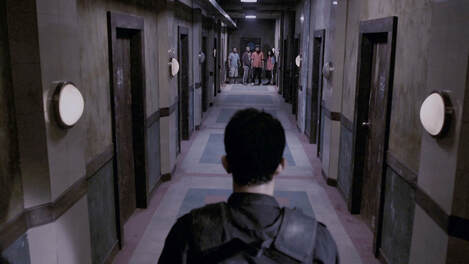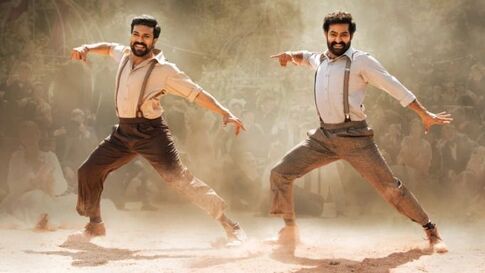B+ | A police raid of an apartment building is met with fierce resistance. Directed by Gareth Edwards Starring Iko Uwais, Joe Taslim, and Yayan Ruhian Review by Jon Kissel |

 One of the joys of foreign cinema is the compare and contrast game. While all movies share similarities within genres, the choreography in a genre like action movies differs from region to region. In Asia, Japan has its period samurai films while Hong Kong combines the mythic wuxia style with Jackie Chan’s life-endangering stunt work. Lacking the decades-long tradition of those two regions, Thailand burst onto screens in the 2000’s with the athleticism of Tony Jaa, and Indonesia followed with the bone-crunching pencak silat style, shepherded to global audiences by Welsh director Gareth Edwards. Edwards became fascinated with Indonesia through his Japanese-Indonesian wife, and found talented non-actors to star in his second film, Merantau. In his follow-up, The Raid: Redemption, Edwards makes a brutal crowd-pleaser of brilliant physicality and contained simplicity, and puts an Indonesian style of martial arts on the map.
0 Comments
 I haven’t seen the original Road House, though it gets mentally grouped in with the muscly action trash that dominated the 80’s. Maybe it’s better than the Commandoes and Cobras of the world, but it sits comfortably alongside its genre buddies with their big body counts and hacky quips delivered in a Schwarzeneggar accent, Stallone mumble, or Seagal whisper. Present-day action filmmaking is too cloaked in irony to pull off the same kind of tone, preferring a that-just-happened incredulity to the you’re-damn-right-it-did swagger of the Reagan/Persian Gulf era. It’s therefore interesting to see what a modern remake of Road House might look like, and how that 80’s tone translates to current sensibilities and filmmaking trends. However, Doug Liman’s adaptation is fruit of a poisoned tree. As Hollywood moves away from superhero movies and is in search of its next big blockbuster trend, let’s hope they leave the 80’s in the rearview where it belongs.
 Of the major global outposts for movies, India is the one I’ve had the least experience with. I’ve seen two Satyajit Ray films from the 50’s (both great), The Lunchbox starring Irrfan Khan (pretty good), and, most indicative of India’s cultural exports, 2022’s RRR. That last one is what most think of when they imagine the work of Bollywood/Tollywood; epics with frequents musical interludes and intricate dance numbers. RRR was a strong introduction to this kind of filmmaking, though it’s not the kind of cinematic empathy-building that I’ve found in countries as varied as Brazil, Romania, Iran, and South Korea. Indian non-musicals, removed from the heightened nature of the genre, seem few and far between, and that’s generally what I want in my foreign film-watching. Monkey Man, from actor/writer/director Dev Patel, isn’t exactly that, as it’s a bloody revenge flick with plenty of choreography, just not the kind that everyone dances to. It does, however, give a peak into a culture and a nation that I feel like I should know more about, given its place in the world, while also delivering on the martial arts ultraviolence of its genre predecessors.
 Cinema as a propagandistic vehicle got a workout in 2022. Top Gun: Maverick venerated the US Navy and its fighter pilots, generating billions in box office and warm fuzzy feelings towards the most powerful military in the world doing whatever it wants, wherever it wants. The Woman King rebranded a West African slaver empire as a bastion of gender equality. RRR became one of the highest performing Indian films and the first in decades to break out with Western audiences, seducing them with a digestible anti-imperialist story while having a deeper read as a pitch for Hindu nationalism that runs counter to India’s secular founding. Whatever queasy political meaning one takes from these and other films (China’s also figured out how to push a nationalist agenda through action filmmaking), it’s impossible to take issue with the imagination and audaciousness of what gets onscreen, especially with S. S. Rajamouli’s RRR. In a rousing thrill ride, peak spectacle meets operatic storytelling in Rajamouli’s epic of Indian resistance to British rule.
 Of all the things to get irritated about in the last three years, the release of Luca direct to Disney+ streaming is extremely low on the worthiness scale, but that Pixar release was some of their best, most atmospheric work and I watched it at home, as opposed to in a theater. It’s not a question of Covid either, as it was released in a post-Alpha, pre-Delta period where even Covid maximalists would’ve been fine going out to see it. Instead, as they have for four of their last five releases, Pixar and their corporate monopolist masters dumped Luca on streaming. I’m an old-school cinephile, and skipping theaters feels like disrespect. The same can be said for Prey, a film shot on location in Alberta with practical effects that contains all the cathartic, chest-thumping moments that characterize the action genre. A film that would’ve done great in theaters instead lands on Hulu, and the world gets a tiny bit smaller. Prey, the fifth and arguably best entry in the Predator franchise, deserves better than it got, but what’s to be expected from a company that is increasingly shunting work it acquired through Fox off to the side in favor of gray CGI sludge and in-house production. |
AuthorsJUST SOME IDIOTS GIVING SURPRISINGLY AVERAGE MOVIE REVIEWS. Categories
All
Archives
April 2023
Click to set custom HTML
|